Gallery Network
7 Questions for Curator Bogomir Doringer and Art Collective Random International on the Artist’s Solo at Nxt Museum in Amsterdam
It is the first-ever solo exhibition presented by the museum.
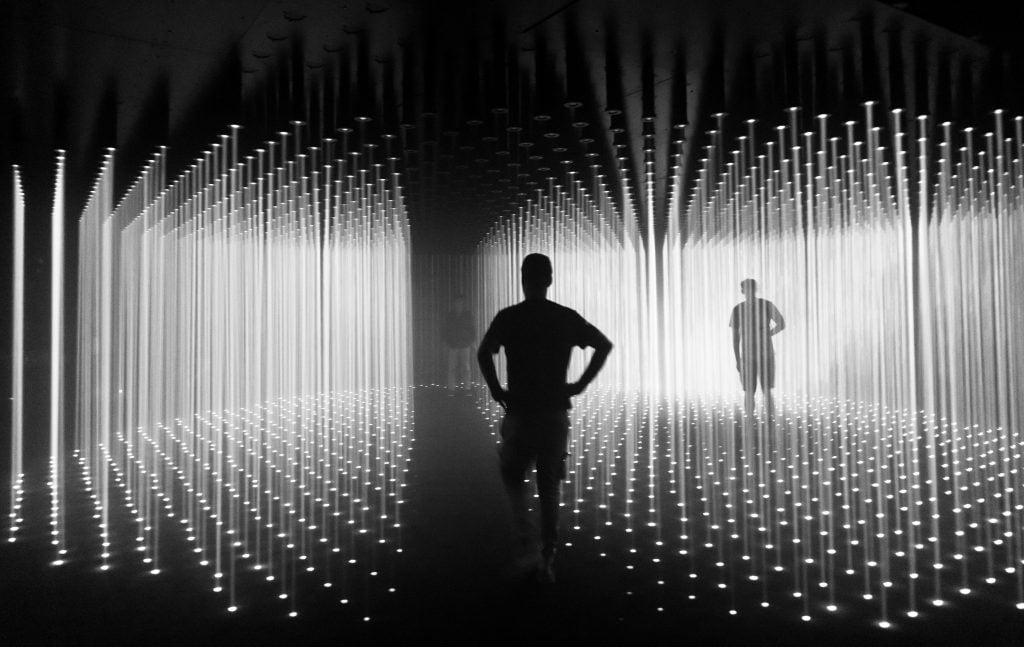
It is the first-ever solo exhibition presented by the museum.

Artnet Gallery Network

The prominent London-based art duo behind Random International, who shot to prominence for their experiential installation project Rain Room, is having its first solo show in the Netherlands.
On view through June 30, 2024, Nxt Museum of Amsterdam is staging the solo exhibition “Random International: Life in a Different Resolution.” Surveying two decades of the art collectives work, the show is accompanied by a public program featuring performances by dancer and choreographer Sedrig Verwoert and commissioned musical compositions by Mamiko Motto, adding a distinct experiential layer to Random International’s diverse body of work.
Curated by Bogomir Doringer, the exhibition marks the first time the collective’s pivotal “Living Room” has been presented in Europe, which, juxtaposed with more recent work, offers visitors a visceral look into Random International’s practice.
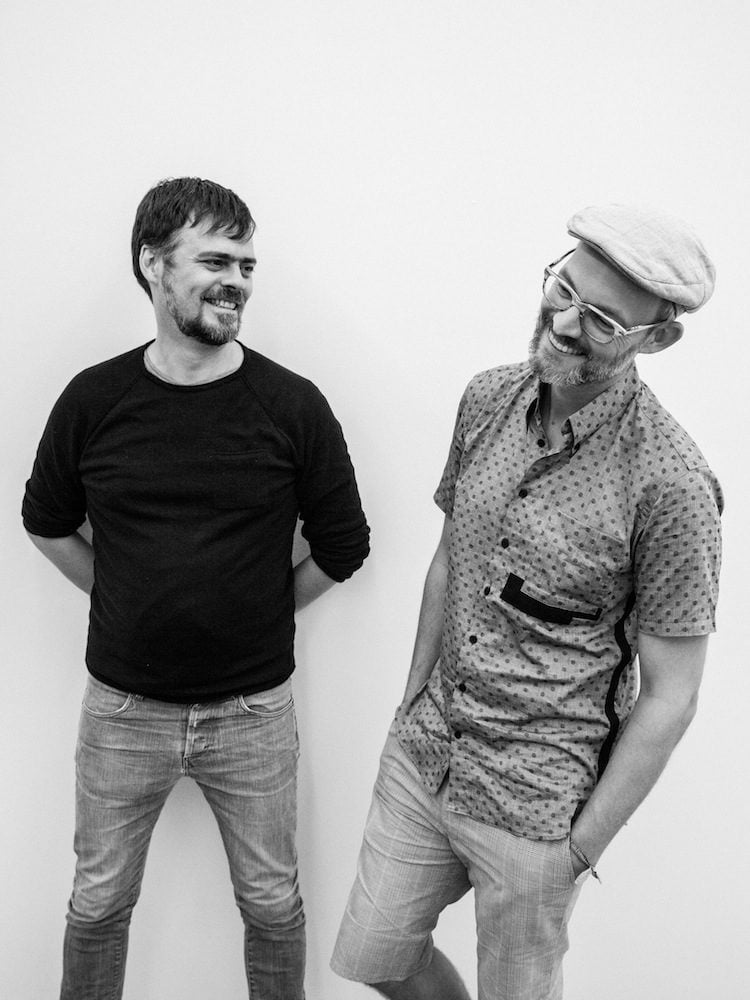
Hannes Koch (left) and Florian Ortkrass (right) of Random International. Photo: Mark Davies. Courtesy of Random International.
The wide-ranging exhibition is also a significant moment for the institution, offering an opportunity for Nxt Museum to fully delve into its curatorial acumen. According to Nxt Museum Founder and Director Merel Van Helsdingen, “from the beginning of the Nxt Museum journey, our team has devoted itself to questioning what’s Nxt in artistic expression, spotlighting makers and their exciting new ways of creating. Our program aspires to center those featured artists, elevating—rather than simply facilitating—their distinct visions.”
He noted that Random International’s ‘Life In A Different Resolution’ marks the institution’s third exhibition at Nxt Museum, and is its first dedicated to a single creative practice. “A labor of curiosity and extensive collaboration, this exhibition feels like a graduation of sorts: it represents the next stage in our evolution, built on four years of dedicated research and experimentation,” he said.
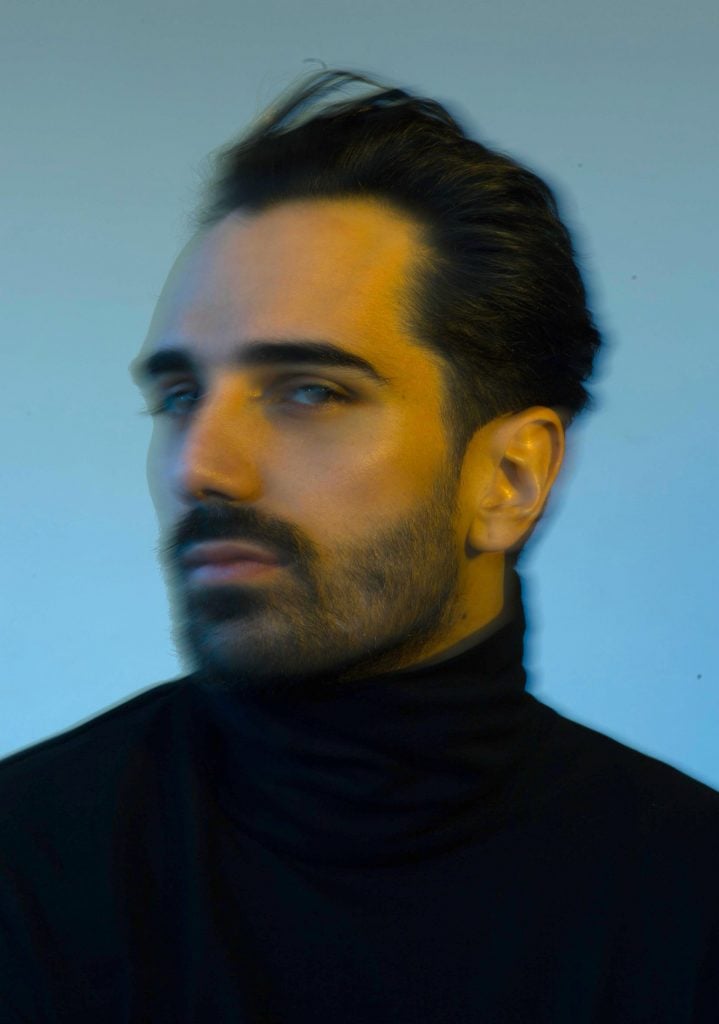
Bogomir Doringer. Photo: Nikola Lamburov. Courtesy of Nxt Museum, Amsterdam.
We reached out to Doringer and Random International founders Hannes Koch and Florian Ortkrass to learn more about what exactly went into creating “Life in a Different Resolution” and some of the pivotal aspects of the exhibition.
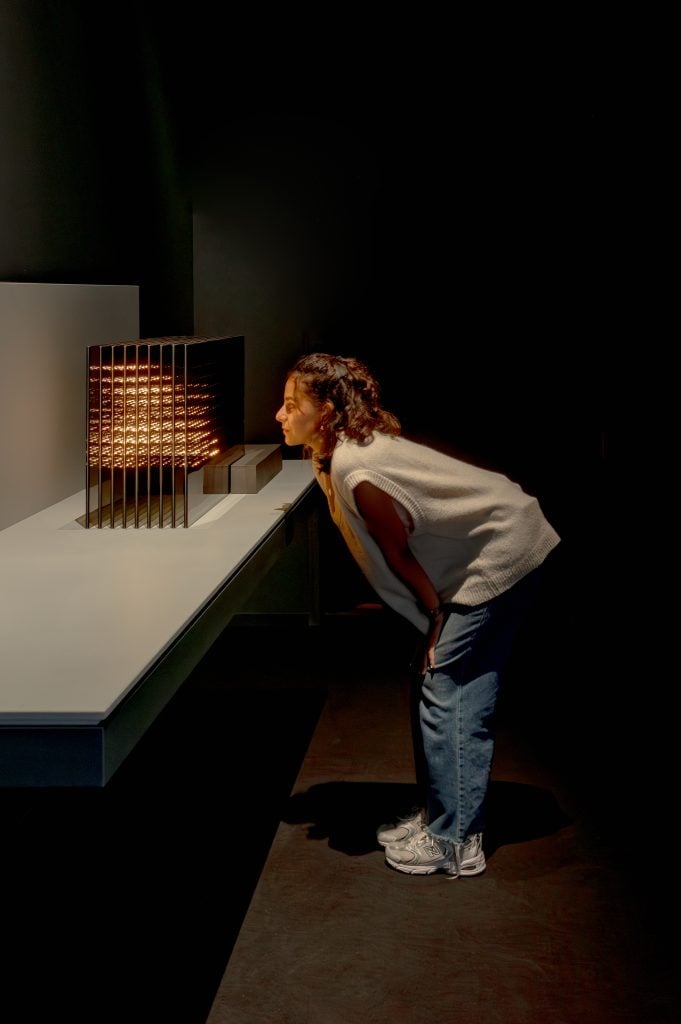
Random International, Swarm Study (Glass) / I (2017), with sound by Mamiko Motto. Photo: Riccardo De Vecchi. Courtesy of Nxt Museum, Amsterdam.
Can you talk about the curatorial process, and what went into creating “Random International: Life in a Different Resolution”? What were some of the primary imperatives when choosing what to include?
Bogomir Doringer: For our third exhibition at Nxt Museum, we embraced the challenge of presenting a solo showcase. Identifying a new media artist seamlessly integrating art, science, and technology, Random International stood out for their contemporary relevance and historical significance, large-scale, diverse installations that translate meaning and what makes us human and alive.
Our selection emphasized works that transcend mere experiences, offering a profound translation of knowledge. The focus on themes like A.I. and swarming not only explores the forefront of technology but also delves into the essence of human existence during crises and urgencies. The exhibition aims to unravel narratives about our times, bridging the realms of art, science, and technology. I was interested in artists that have strong crafting quality, and that unfold a network of amazing collaborators’ interdisciplinarity. Random Internationals works are sculptural and performing, each of them comes with developed dramaturgy.
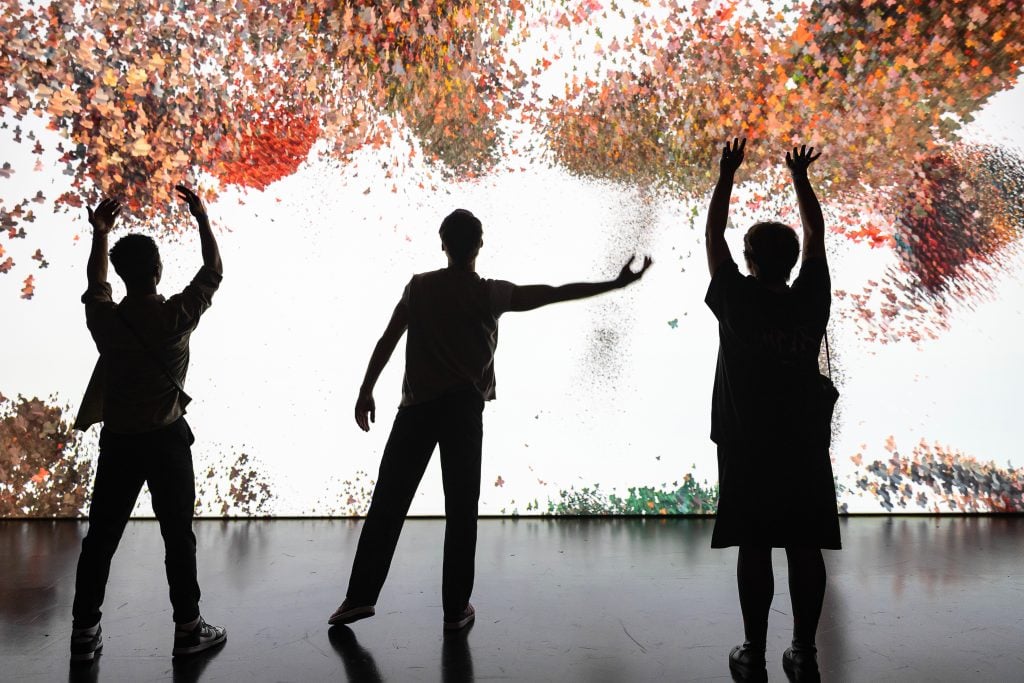
Installation view of Random International, Life In Our Minds: Motherflock / III (2023), with sound by Masahiro Hiramoto. Photo: Riccardo De Vecchi. Courtesy of Nxt Museum, Amsterdam.
In bringing together this retrospective, and revisiting work from over the past two decades, did you garner any new insights or revelations into either your practice or past work?
Random International: What we make, we make together with our audiences. From day one, this has been implicit in working collectively as Random; now, it has evolved into the idea of co-creation as an explicit procedural quality. Initially, that was a terrifying thought as it infers a loss of the creative control that a lot of artists (ourselves included) probably hold rather dear. But actually, it’s an increasingly liberating thought: in life as in art, we seem to have very little control. And strangely, by surrendering to this realization, our collective effort to create is amplified and completed with each viewer. It the togetherness of a collective act we can give our intention the strongest form of expression.
Developing this exhibition was thus a surprisingly energizing process, thanks to Boromir’s breadth of thinking and his openness to experiment. Seeing the narrative of the individual works deconstructed curatorially in the initial development phase the exhibition helped us to find a new approach to this shared creation process, from which all the work originates. Lastly: it increasingly seems to us that new art requires new institutional models of presenting it, and the Nxt Museum is truly rising to the challenge.
Are there any specific works or projects in the show that you were most excited to have included?
R.I.: Exhibiting “Living Room” in Europe for the first time is incredible, especially for such a long duration which allows us to explore the relationship between the work and the audience/human and machine to a much larger degree. This new variation of “Living Room” also gave us the opportunity to work with Signe Lykke, who composed the score, which was a long-term ambition as her radical approach to co-creation within classical music is as unique as her talent.
Experiencing the enthusiasm for “Presence & Erasure” is also very special to us, as it’s part of a body of work that goes back a long way, right to the origins of Random International. It’s interesting to look back at our relationship with automated facial recognition and the self-image, seeing how much has changed and how much remains the same over the past two decades. And it has been amazing to discover the extent of Nxt’s kindred fascination for collective behavior, and the ways in can be explored in-depth (especially the fact that Bogomir even reached out to the granddaddy of flocking himself, Uncle Craig Reynolds. We’ve been fascinated with his flocking simulations since our first foray into the world of collective behavior at the “Trash Luxe” exhibition back in 2006, and it’s very special to us that Bogomir made that connection, 18 years later!).
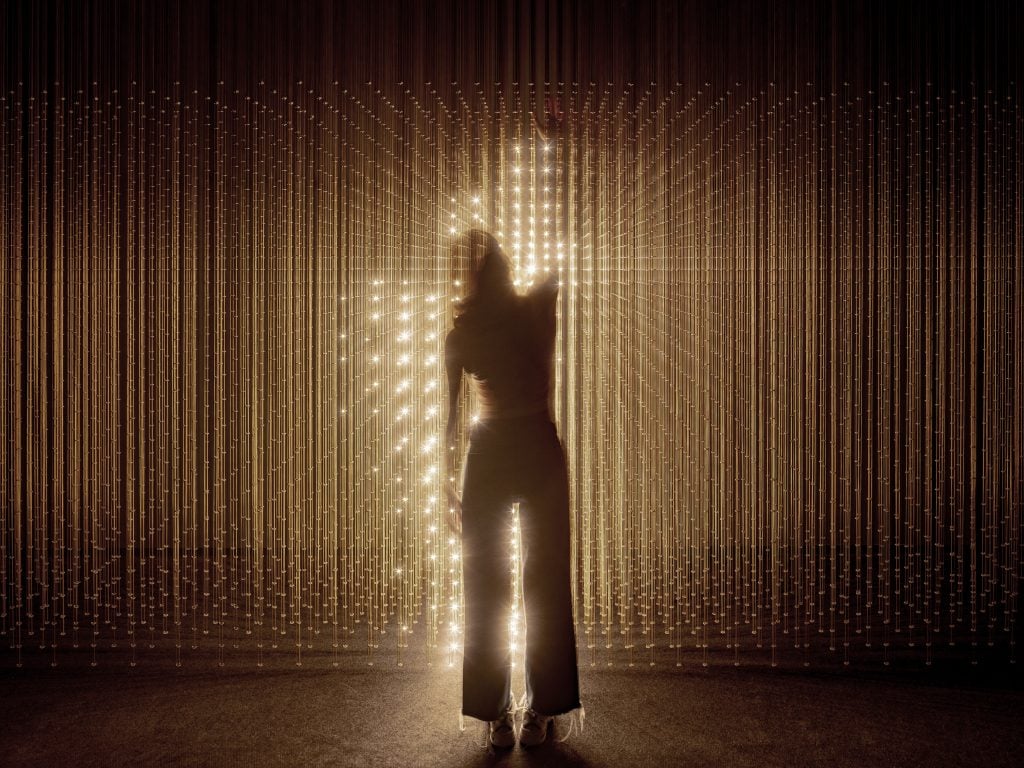
Random International, Our Future Selves (2019). Photo: Riccardo De Vecchi. Courtesy of Nxt Museum, Amsterdam.
From a curatorial standpoint, what do you hope exhibition viewers take away with them? What is one thing you are taking away?
B.D.: Primarily, my focus lies in understanding the emotional impact on visitors when experiencing the curated exhibition. Amidst the backdrop of contemporary challenges, creating a space for reconnection with oneself and others becomes crucial. Exploring the intricacies of our minds, bodies, and interconnectedness serves as a paramount goal. Additionally, shaping the narrative’s flow between objects and spaces was essential, challenging the notion of new media by incorporating historical pieces in transition rooms resembling cabinets of curiosity. This deliberate manipulation of time perception aims to provoke contemplation on the role of the human body within the installations, contemplating how machines perceive us and how that translation influences the overall interaction and experience with the artwork.
As artists, are there any aspects of your practice or recurring themes that you feel are best highlighted in this show?
R.I.: The underlying ideas of shared creation and collective behavior that fuel our work studio every day get ample space in this exhibition; and then we also get to push that spirit of collaboration and discovery further over the course of the show. For us, the red thread that runs through everything—this show, our work, the human species—is this enduring sense of longing for connection. It underscores so much of who we, as human beings, are and many of the works exhibited explore this urge or need to connect with something, alien or familiar, self, or other, human or machine, sentient or not. It’s what makes us who we are.
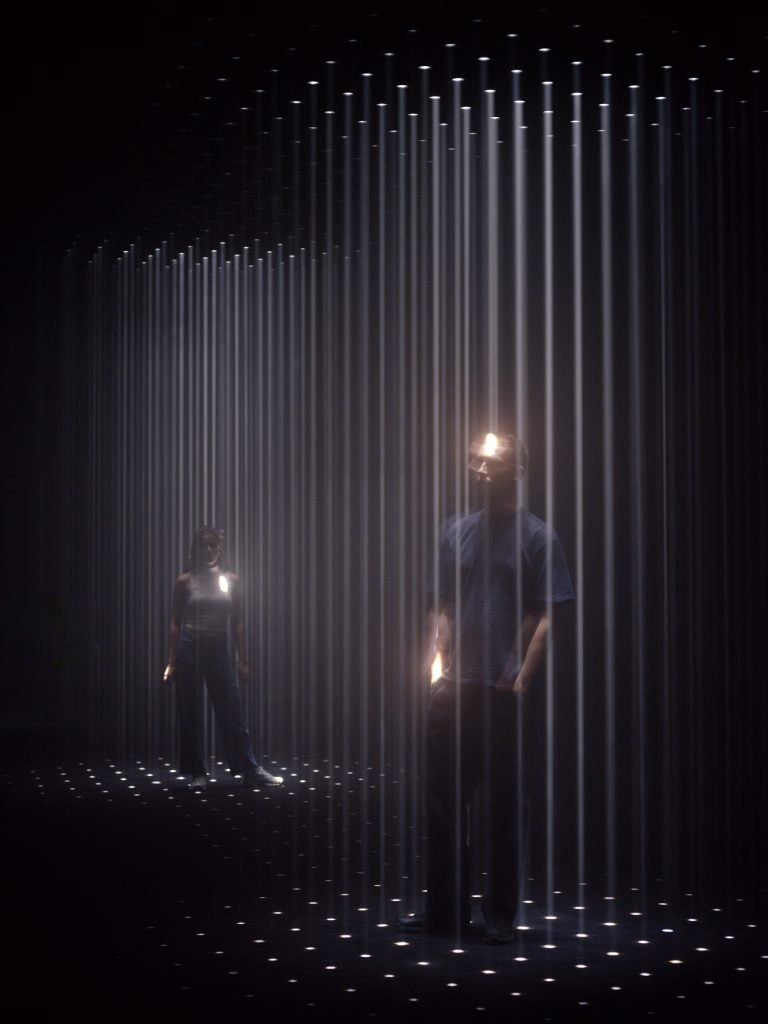
Installation view of Random International, Living Room / variation II (2023), with sound by Signe Lykke. Photo: Riccardo De Vecchi. Courtesy of Nxt Museum, Amsterdam.
What was either the most interesting or challenging aspect of curating this show?
B.D.: The absolutely most beautiful and wonderful was that after multiple meetings with Random International and with Hannes and Flo, but also with Heloise Reynolds, who is a dramaturg of Random International, was this moment of discovering this series of events or dinners that Random International was organizing under the title “Life in a Different Resolution.” And, you know, immediately the question was what was served on those dinners. And so, the concept behind dinners was that experts from different fields would be invited by Random International to their studio, there would be food served, and in return those invited guests would speak about psychology, about evolution, about robotics. So, those dinners were an opportunity for Random International to go beyond of questioning and asking why they create something and understanding in a way how they, as humans, are wired or how they’re thinking and producing.
Many wonderful artworks were initiated after these dinners, And on the other side, I think the ritual of eating together and having topics such as A.I., robotics, swarming, etc., is a gesture that I would like to offer to audience, to place audience at the table and give them a seat at the table when it comes to discussing of topics that are very much about a future of humankind. That’s, I think, the most spectacular and big discovery. And then, of course, what has been served on those dinners, what was the menu? Between all these big ideas, what were the dishes that were served?
The show will be on view for nearly nine months. What are some of the benefits of a long-run exhibition? And has the process of creating this show specifically given shape to new ideas or underscored the value of ideas you’ve returned to?
R.I.: So many benefits: work and ideas get appropriate time to breathe. At the studio, generating ideas for the works, prototyping, building, and testing are all collective acts; but only once the work is available to an audience does the next stage of its life truly begin and this requires a myriad of co-creators in the form of a visiting public. It’s not so much that people complete the piece, more that they enter a dialogue of continual creation with it. In that way the works are all ongoing experiments into human and non-human behavior. Here, for the first time, we can develop for the idea of a living exhibition.

Random International, Fifteen Points (2019), with sound by Chihei Hatakeyama. Photo: Esteban Schunemann. Courtesy of Nxt Museum, Amsterdam.
“Random International: Life in a Different Resolution” is on view at Nxt Museum, Amsterdam, through June 30, 2024.
More Trending Stories:
Art Dealers Christina and Emmanuel Di Donna on Their Special Holiday Rituals
Stefanie Heinze Paints Richly Ambiguous Worlds. Collectors Are Obsessed
Inspector Schachter Uncovers Allegations Regarding the Latest Art World Scandal—And It’s a Doozy
Archaeologists Call Foul on the Purported Discovery of a 27,000-Year-Old Pyramid
The Sprawling Legal Dispute Between Yves Bouvier and Dmitry Rybolovlev Is Finally Over